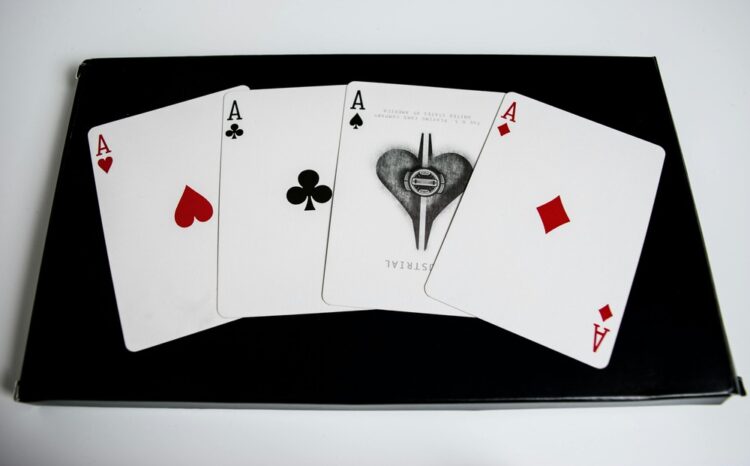As you delve into the game of Red Dog, the rules may initially appear straightforward. However, delving deeper into the strategies and card spreads will reveal a complexity beyond the surface. Developing the ability to accurately predict outcomes and place informed bets is crucial for success in this seemingly simple yet intricate game.
By understanding the nuances of Red Dog, players can enhance their gameplay and potentially increase their chances of winning. Are you prepared to explore the strategic aspects of Red Dog that can enhance your gaming experience and possibly improve your outcomes?
Game Overview
Red Dog is a card game where players predict whether the value of a drawn card falls between the values of two other cards dealt by the dealer. It involves a standard 52-card deck with cards ranked in poker order, where aces hold the highest value. Players place their bets, and the dealer reveals two cards.
If the two cards are consecutive, the round results in a push, returning the bet to the player. In case of two cards of the same value, a third card is drawn. Players then decide if they believe the value of the third card will fall between the first two cards. Correct predictions result in wins based on the established payout table.
Red Dog offers a fast-paced gameplay experience with opportunities for significant wins. It combines elements of chance and strategy, making it engaging for players seeking quick rounds and potential rewards.
Setting Up
To begin a game of Red Dog, you’ll need a standard 52-card deck and a designated dealer to facilitate the game. The deck should be thoroughly shuffled to ensure a random distribution of cards.
The dealer will then deal two cards face up on the table, creating the spread. The distance between these two cards determines the range within which a winning combination can be formed. For example, if a 5 and a 9 are dealt, the spread would be four cards wide, allowing any card from 6 to 8 to result in a win.
Players are required to place their bets before the dealer reveals the third card. The bet amount can vary based on the player’s level of confidence in the potential outcome.
If the third card falls between the two initial cards, the player wins according to predefined payout odds. However, if the third card is outside the established range, the player loses the bet. It’s essential to establish this setup meticulously to ensure a fair and engaging experience during the game of Red Dog.
Playing Red Dog
Red Dog is a card game that involves quick decision-making and strategic betting. The game starts with the dealer dealing two cards face-up on the table. Players must then assess the spread between these cards to determine whether to increase their bet or “call” for a third card.
Prior to the card dealing, players place their initial bet which can be raised during the game if they believe the third card will fall between the first two cards. If the third card indeed lands between the initial two cards, players win according to the payout odds. However, if the third card falls outside the range of the first two cards, players lose their bet.
In essence, Red Dog offers a straightforward and engaging gameplay experience that hinges on analyzing the card spread effectively to make informed betting decisions.
Understanding Payouts
In Red Dog, payouts are determined by the spread between the two cards dealt. The payout structure is fixed and doesn’t vary across different casinos. If the two cards have consecutive values, it results in a push, and the bet is returned.
A spread of one card apart yields a payout of 5:1, while a spread of two cards apart increases the payout to 4:1. Payouts escalate with larger spreads – three cards apart pay out at 2:1, and spreads of four or more cards apart offer a payout of 1:1.
Understanding these payout ratios is crucial for strategic betting and optimizing winnings in Red Dog.
Advanced Strategies
Mastering advanced strategies in Red Dog involves a thorough understanding of probability and risk assessment. To enhance your gameplay, consider the following tips:
-
Card Counting: Monitoring the high-value cards dealt can help in estimating the probability of a spread. This information can assist in making more calculated decisions on whether to raise or stay.
-
Spread Analysis: Evaluating the spread between the dealer’s two cards is crucial. Understanding the potential range of values that can exist between the two cards can influence your betting decisions.
-
Bankroll Management: A sound bankroll management strategy is essential for sustaining losses and maximizing winning streaks.
Establishing limits on betting amounts and adhering to them is crucial to prevent excessive losses.
Curious Keno: A Beginner’s Guide to This Lottery-Style Game? We’ve got an article for you – https://casinobezdep.com/2024/12/05/keno-a-beginners-guide-to-this-lottery-style-game/
Conclusion
Now that you are familiar with the rules and strategies for playing Red Dog, you can approach the game with confidence. It is important to carefully assess the spread before placing your bets, practice effective bankroll management, and make well-informed decisions to improve your chances of winning. With dedication and a strategic approach, you can enhance your skills as a Red Dog player and experience the excitement of this popular casino game. Best of luck at the tables!

